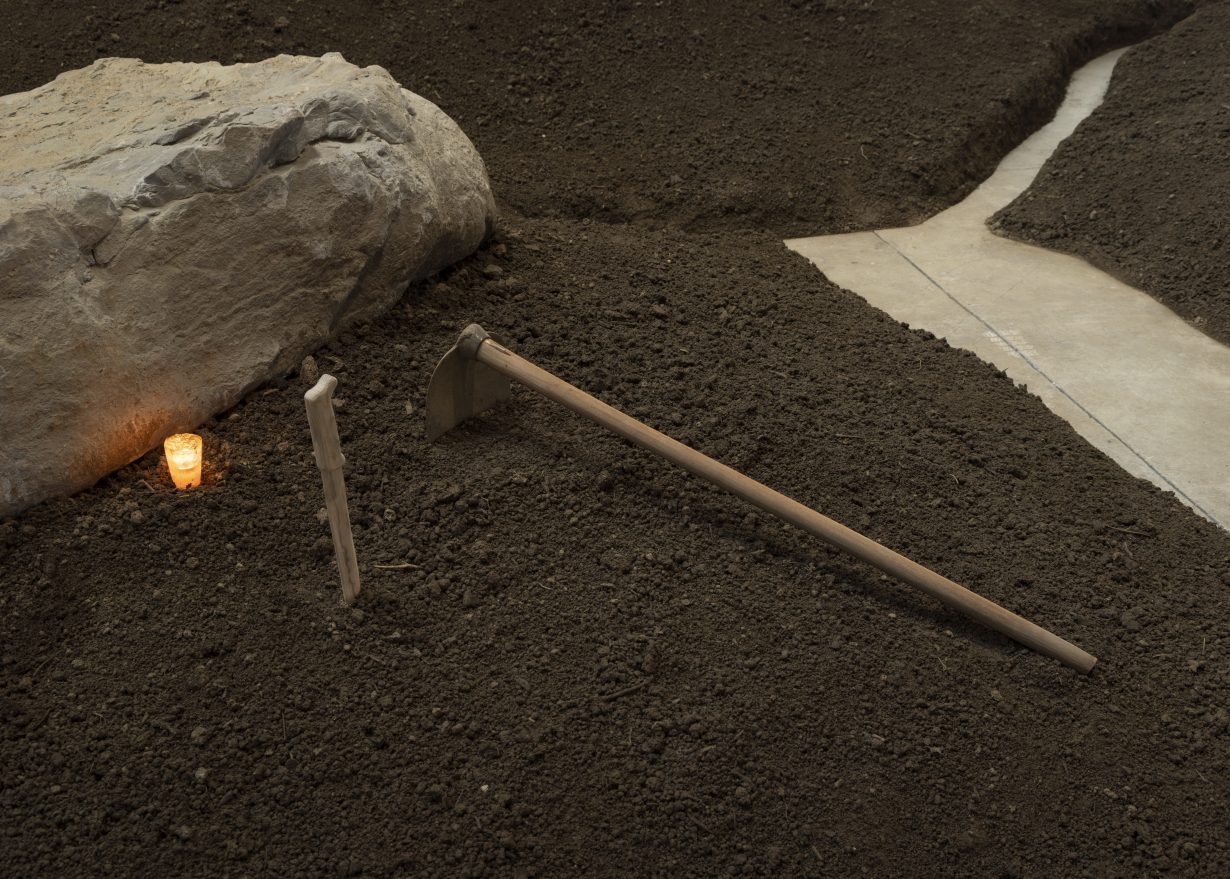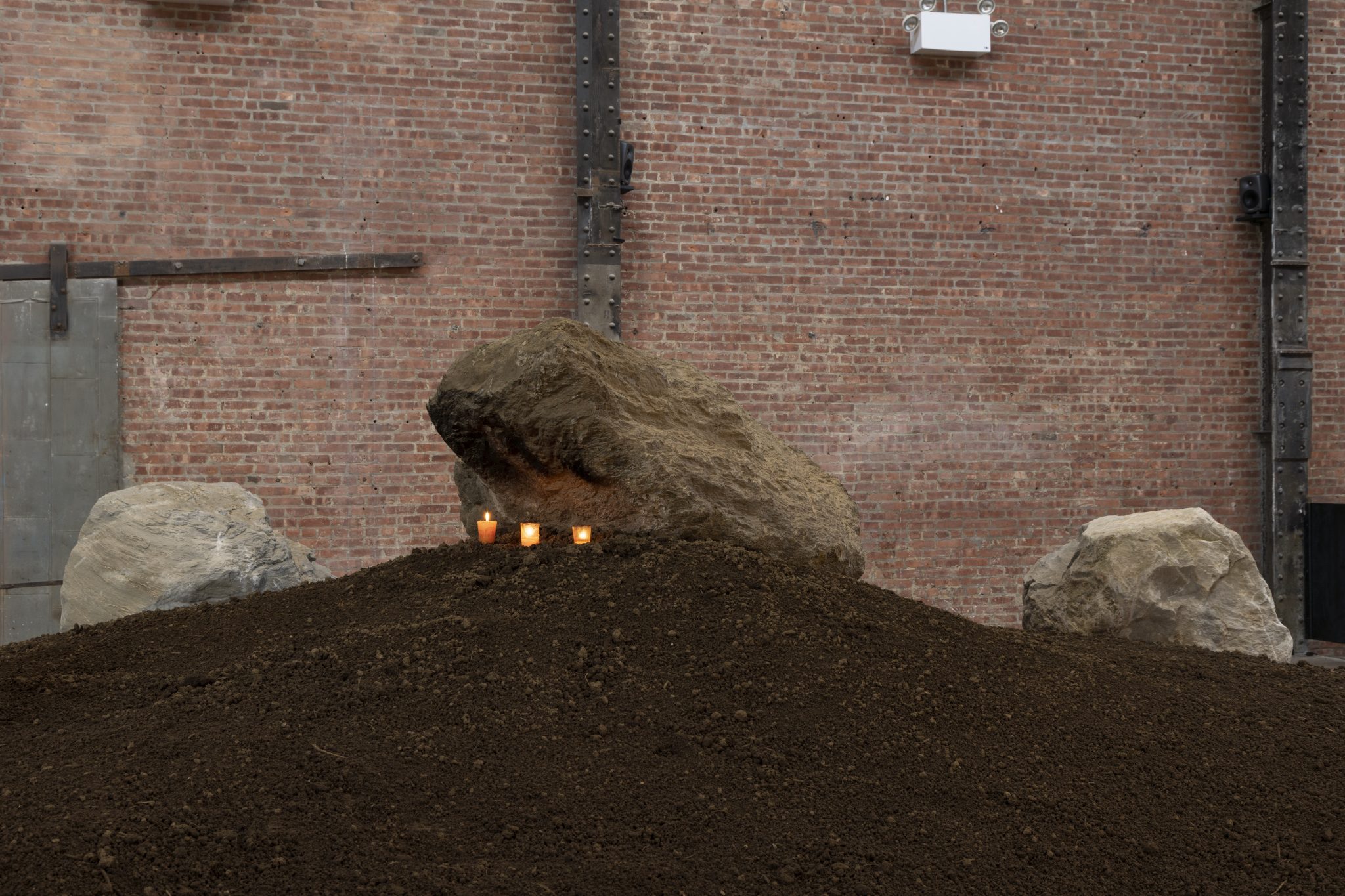The artist uses spiritual practice to forge personal connections to the natural world in B’alab’äj (Jaguar Stone)
The mound of earth that stretches across the gallery floor is shaped according to a meticulous design. Which is a good thing, because it comprises the entirety of Maya Kaqchikel artist Édgar Calel’s first institutional solo show. Piled high, the soil is both foundation and structure. Moreover, studded with flickering candles – offerings to ancestors, as is customary in Kaqchikel Maya spiritual practice, we are told in the press release – and rough-hewn rocks around which the flames dance, B’alab’äj (Jaguar Stone) (2023) is imbued with ceremonial sentiment. Scattered traces of agricultural labour – hoes and wooden machetes – complete the tableau’s prayer for a bountiful growing season.
As viewers circumambulate the site, a myriad of cleanly carved furrows draws the eye from the edges of the soil inward. The forked paths look like glyphs on the floor. Among them appear the letters K, I and T written multidirectionally. The word ‘kit’ appears throughout Calel’s work and is often written on vertical surfaces using mud. Kit-kit-kit was a sound his late grandmother made to call birds to her yard, the exhibition materials inform viewers. At Sculpture Center, birdsong recorded in the artist’s Guatemalan hometown, where his grandmother lived, plays in the airy ground-level gallery. These sounds, like the candles in the soil, link the invocation of intergenerational bonds to familiar figures of the natural world.

Themes of mortality and change seem central to Calel’s installation, which is not permanent in the sense that Walter De Maria’s similarly sized New York Earth Room (1977) is. Nor are its maintenance rituals – museum staff must light the candles daily – purely functional and secular. Moreover, the crux of B’alab’äj is not the visual dissonance of wilderness brought indoors but instead the allusion to the work of Maya spiritual guides. Tension exists in displaying the ceremonial imagery of an implied clergy who, following centuries of persecution, first by Spanish conquistadors and then by the Guatemalan state, generally refrain from revealing their identities to those outside their communities.
Calel’s exhibition ultimately circumvents the ethnographic tendency to expose and explain by simply delineating a circuit for unguided contemplation. By transposing and placing his authorial stamp on a set of geographically specific spiritual traditions, Calel, for better or worse, shifts the emissarial onus from his community’s shoulders onto his own.
B’alab’äj (Jaguar Stone) at Sculpture Center, New York, through 7 August
